What is brand equity?
There are many key terms in the world of business, and for people who are new to eCommerce, we’re putting together some shorter posts that will help aid understanding, and empower you to be able to hold your own when you’re conversing with more experienced sellers and suppliers.
In this post, we’re looking at what brand equity means, and why it is important to keep brand equity in mind as you’re building your business. Not every point we make here may be applicable to every business, but brand equity is something that every business needs to keep in mind – so let’s get started!
What is brand equity?
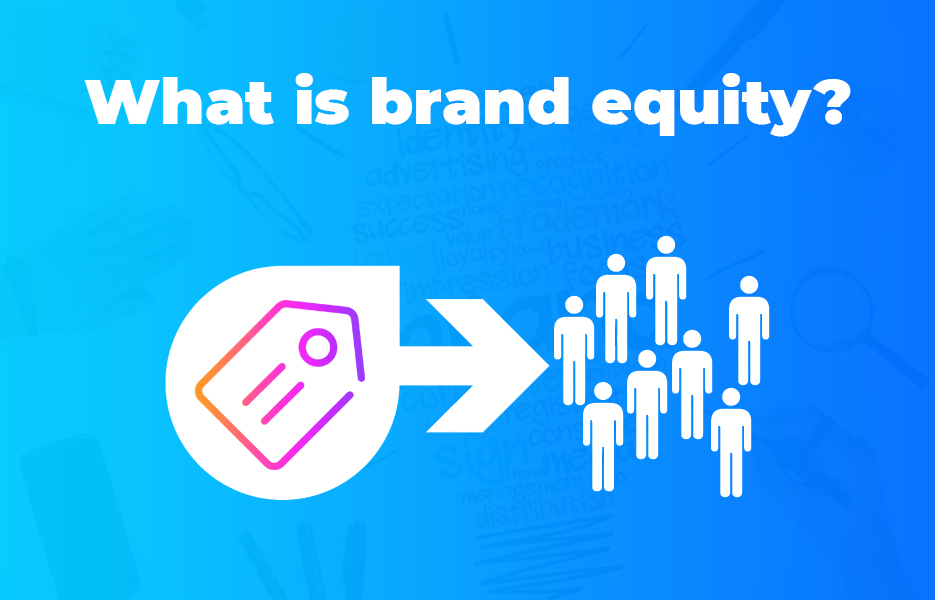
Investopedia defines brand equity as:
“a value premium that a company generates from a product with a recognizable name when compared to a generic equivalent.”
Essentially, it is the extra value that a company gets from having a recognisable name – a product that is a household name. We’re talking about the companies that make a product so recognisable, that we refer to any other product by that name. It’s brand equity that means many of us refer to our vacuum cleaners as Hoovers. It’s brand equity that leads to many people buying a painkiller with a brand name on the box, even when we’re aware that the research says the generic brand will do exactly the same job.
The positive equity that is built on a particular product means that companies are able to create more products with their brand that will be trusted by consumers because they already trust the company. Going back to our Hoover example, they no longer just make vacuum cleaners. As a company, they now manufacture all kinds of home appliances, including washing machines, ovens and microwaves, and fridges and freezers – all of which benefit from the implicit trust that their original vacuum cleaner built.
What makes up brand equity?
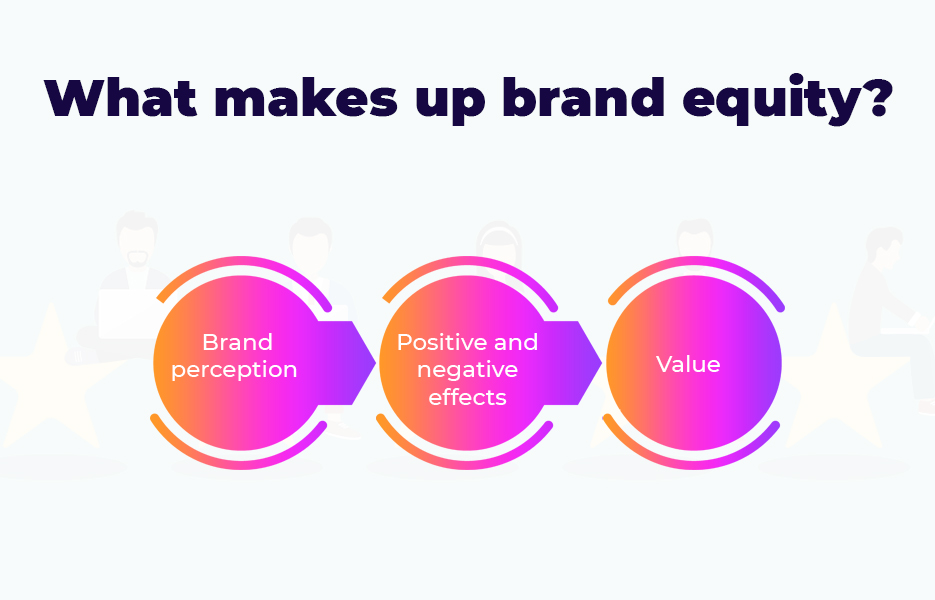
There are three main components of brand equity that you’ll need to be aware of.
- Brand perception – this is what customers see the product, or service as representing, rather than what the company actually does, or says it does. The customer has responsibility for this – the business can only act to try and change it.
- Positive and negative effects – this is where the reaction of customers makes an impact. If customers are reacting positively, the company’s reputation, products and ultimately, their profits will benefit positively. If customers act negatively, of course, the business will suffer.
- Value – the positive and negative effects will both return tangible and intangible value for the business. Tangibles for positive effects might include sales, profit or revenue increases, while intangibles might include brand awareness and goodwill. Negative effects can cause both tangible and intangible values of positive effects to be wiped out completely, depending on the situation.
How can you increase your brand equity?
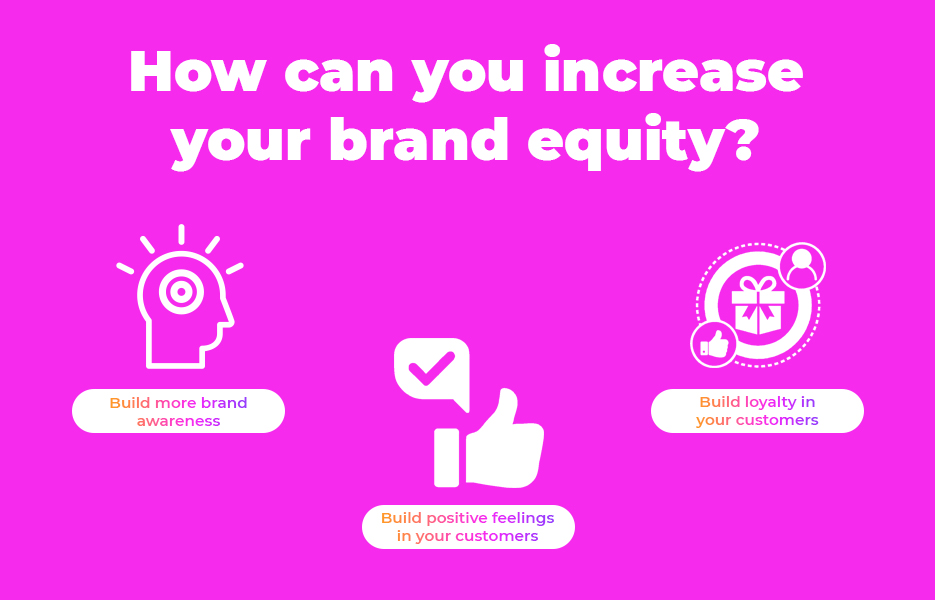
When you realise the value of brand equity, it’s going to be something you want to build for your business. But it isn’t just a case of doing one thing, and doing it quickly – customers want to buy products they recognise and trust, and unfortunately it isn’t possible to create that kind of deep connection overnight.
Build more brand awareness
Helping customers to recognise your brand identity when they’re searching for products or services is the first step. Secondly, you’re going to want them to perceive it the way you want them to. This means doing more of the things you’re already aiming to do well – and keeping that building. Here’s a few examples:
- Keeping your branding, including your logo consistent so anything that comes from your business is recognisable
- Providing fantastic customer service
- Actively using your social media channels and doing so effectively – interacting with followers, sharing their content and so on
- Continuing to communicate with your customers through email, newsletters and cross promoting updates on your social media
- Sharing a relatable story that illustrates how your brand came to be, and how it grew
- Maintaining your position at the front of the market or niche
- Continuing to provide additional value for your customers
These aren’t the only ways in which you can build more brand awareness, of course – but they’re a good place to start.
Build brand meaning and show what it stands for
There are two main things you will need to think about when looking at building brand meaning:
- How well your product does what your customers need it to do
- How it meets social and psychological factors
Businesses that hit both of these will pull in more customers that share the values of the company. They will be attracted to the ethics of the company, and remain loyal to the company – because they will have positive feelings about the company.
Take, for example, TOMS. They sell shoes, but they don’t just sell shoes – every time a person buys a pair of TOMS shoes, the company donates a pair to someone in need. TOMS shoes are good quality, and every time the customer wears them, they feel good about their choice, and might wonder who their donated pair ended up with. They are likely to be complimented on their choice (especially with some of the on-trend designs that TOMS create) and so they will tell their friends about where they got their shoes from. Their shoes feel good on their feet, on their conscience, and they pass that good feeling on when they tell people about them and then they go on to buy TOMS too.
Build positive feelings in your customers
When your customers judge your brand positively, they’re more likely to become a loyal customer that returns regularly, and tells their family and friends, and social media followers about your brand. To get to this point, you’ll need to provide evidence that enables customers to make positive judgements about your brand’s credibility, capability and quality in comparison with your competition.
- Does your brand excite them?
- Is your brand fun?
- What do their friends and family think of your brand?
- Do they trust your brand?
- Does your brand help add to their self-respect?
There are many other positive feelings that you might be able to work with for your brand, depending on what your business does – you will need to establish how you can increase that positivity.
Build loyalty in your customers
This is probably one of the most difficult things to achieve in today’s society, since it is so easy for customers to find an alternative at better price points. The key to increasing brand loyalty, and repeat custom, is to ensure your customers form a psychological bond with, and feel a part of your brand. This means creating communities on social media, encouraging your customers to act as brand ambassadors by getting them to share your social media posts and participating in your discussions. Where customers buy into your brand so much that they talk about you a lot – whether online or offline – well, that is the sort of customer that is impossible to buy.
How to measure brand equity?
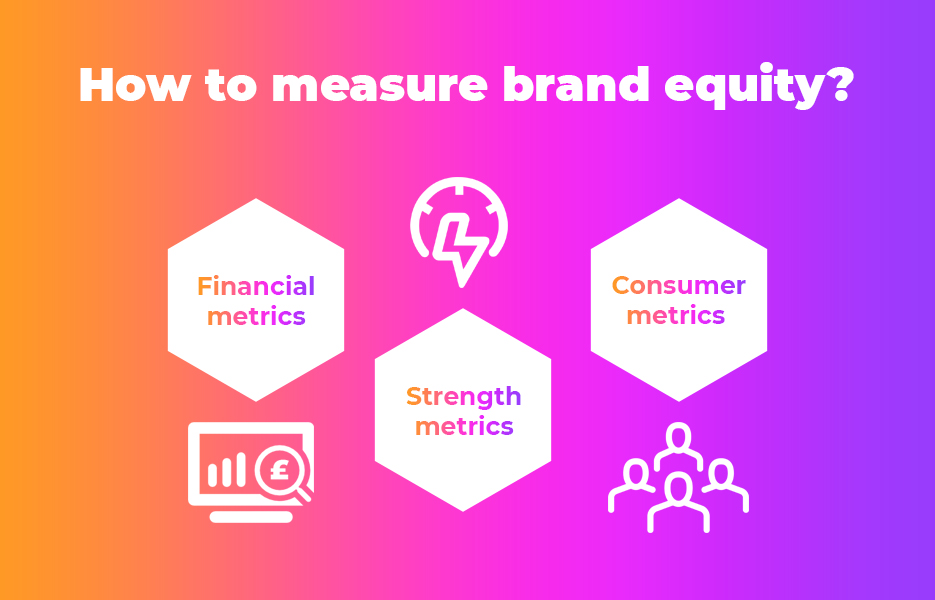
Like with anything you do in your business, there’s little point in trying to create brand equity if you can’t measure your efforts. Here are the three main ways in which you can measure your efforts.
Financial metrics
As with anything you do in business, it boils down to how much you earn from it. You need to be able to measure the data market share, profitability, revenue, price, growth rate, cost to retain customers, cost to acquire new customers and branding investment – which makes it sound like a pretty big job – but that’s because it is! Using your financial metrics, you can demonstrate how important the brand is to the business, which can help you to measure how much of your budget can be allocated to marketing and so on, so you can keep the business growing.
Strength metrics
The stronger your brand is, the more likely it is to survive in spite of change. That means you need to measure the strength of the brand. Tracking awareness and knowledge of the brand, accessibility, customer loyalty and retention, licensing potential and brand ‘buzz’ are all key factors to measure. Measuring the strength of the brand is pretty simple – you can use surveys that use open text questions to measure these things, and monitoring your social media will give you an excellent idea of how well your brand is perceived by customers.
Consumer metrics
Your customers are what build your brand for you. Without them, all the content and design work in the world is for nothing, so measuring the purchasing behaviour of your consumers is essential. You’ll need to track and measure brand relevance, emotional connection, value and brand perception through surveys and social media monitoring.
It’s pretty clear that there is some overlap between each metric and how you measure them, so think holistically when you’re creating surveys, or manipulating the data from your social media channels. Creating surveys that tackle both strength and consumer metrics at the same time will enable you to work more efficiently, and to get the most value from the survey.
What can impact brand equity negatively?
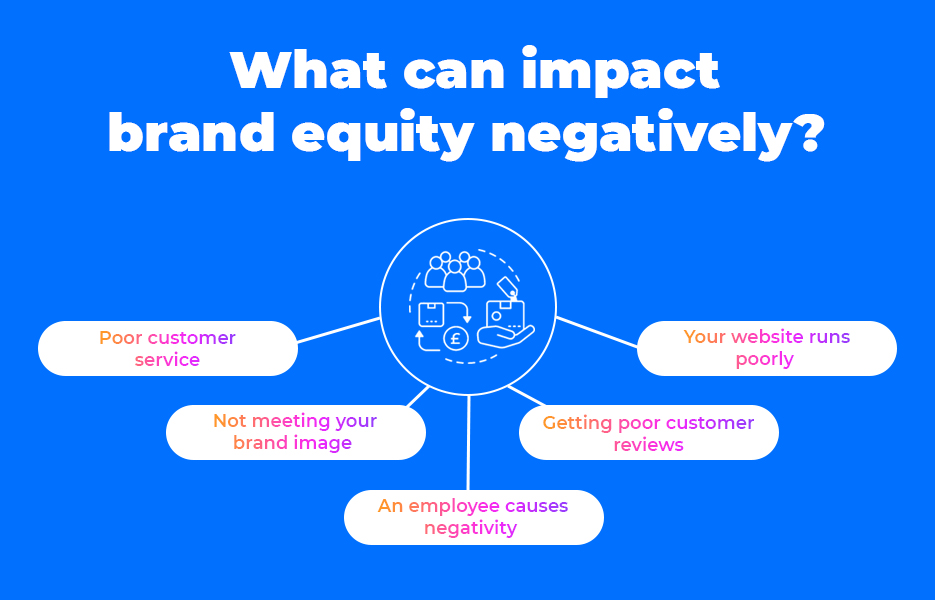
These are the kinds of things that impact on your brand’s reputation negatively. Some of these things will be major – for example, financial brand Goldman Sachs lost a huge amount of value in their brand when their role in the 2008 financial crisis. Some issues may seem major but don’t have a long-lasting effect on the business, such as when Toyota had to recall over 8 million vehicles due to acceleration issues – certainly in the UK, the company’s response has led to Toyota still being a recognised and trusted brand.
There are a few things that can cause damage to your brand pretty quickly – and these are pretty logical things to keep on top of:
- Poor customer service – we all hate it when we get bad service from a company, and poor service is one of the biggest causes for complaint on review websites like Trustpilot. You know how to provide good service, so be sure to do so, with timely responses on all your communication channels, and ensuring you follow up to ensure any complaining parties are satisfied with the outcome.
- Not meeting your brand image – if your business advertises ‘the cheapest products’ or ‘always the highest quality’, you better meet those standards that you have set.
- An employee causes negativity – this might be when they’re at work, or off the clock, but if an employee behaves in an unethical or distasteful manner, it can have repercussions for your brand. In this situation, be completely honest about what happens, and apologise both publicly and privately where appropriate – and of course, get legal advice about how you can handle the situation. Once you’ve got the legalities sorted, seek to make reparations – so, if your employee offended a whole section of society, make a donation to, or form a partnership with an organisation that supports the people they offended. Also, consider providing training for your whole team.
- Your website runs poorly – we’re sure that if you’re in eCommerce this won’t be an issue for you, but there is nothing more important today than keeping your website looking good, performing well, and secure. You’re likely to be investing in SEO, but this is important too – as well as promoting your website on your social media, of course.
- Getting poor customer reviews – this is something we’ve already mentioned, but it is bound to happen from time to time. Don’t ignore them when they happen, even if the customer is being unreasonable or unfair. Contact the customer offline, and try to resolve the issue. If they remain unreasonable, comment on the situation in an apologetic manner, specifying that you have attempted to resolve the situation, so other potential customers know you care and have tried to rectify any mistakes.
Brand equity isn’t something that you can get instantly, but is rather something that culminates through time. As a new business, you’ll still be aiming to build it, but if you use the right strategies, the brand equity will build naturally. So when you’re setting your goals, be sure to keep building brand equity as one of your goals. Our key points to take away:
- Build your brand meaning, and brand awareness
- Your brand meaning & awareness should foster positive feelings and brand loyalty
- Keep a close eye on your metrics so you can measure your brand equity
- Deal with anything that can impact negatively on your brand equity as quickly as possible
Keep that brand equity building!

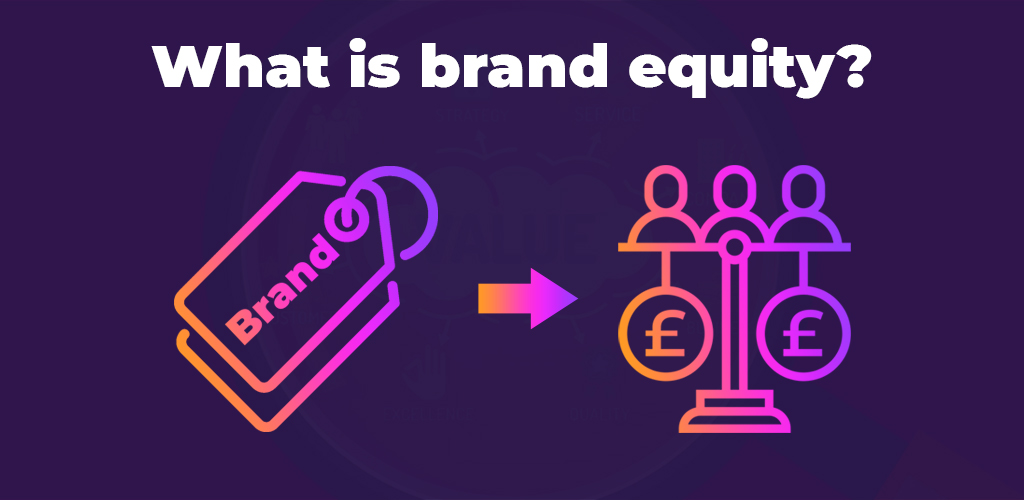


DropShip products from verified suppliers to diversify your inventory and scale your eCommerce business